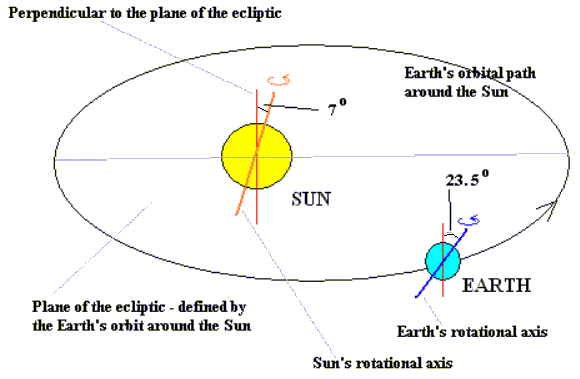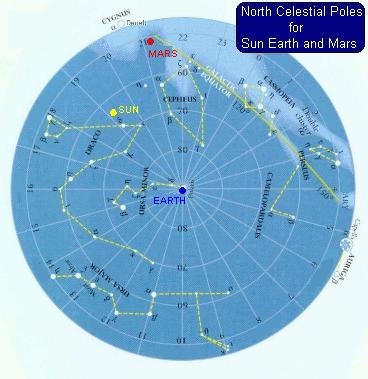
The revolution of the Earth in an elliptical (but nearly circular) orbit around the Sun defines a plane that is called the 'plane of the ecliptic'. This is used as a reference plane to describe the orientations and motions of all other bodies in the solar system.

The above diagram, which is not to scale, shows the Earth and the Sun. It is general knowldege that the Earth's rotational axis is inclined at almost 23.5 degrees with respect to the perpendicular of the ecliptic plane. This is course what produces the seasons on the Earth. Not so widely known is that the Sun's rotational axis is also inclined, but with a smaller angle of 7 degrees. Over a short time interval these axes appear to be fixed with respect to the distant stars, pointing to a fixed place on the (imaginary) celestial sphere. However, over time scales of many thousands of years they do precess and nutate (wobble).
These orientations complicate solar observations. The Sun's tilt causes its poles to nod with respect to a terrestrial observer. Sometimes the north pole is just visible, and sometimes the south pole is visible. This changing angle in a plane toward and away from the observer is termed the B angle, and as expected, it varies from +7 to -7 degrees throughout an Earth year.
In the plane of the sky ( the plane perpendicular to the observer's line of sight), the solar axis appears to rotate back and forth throughout the year. The range of this angle, designated the P angle, is from -26 to +26 degrees. We might initially expect a P angle variation of +/- 30.5 degrees (23.5 + 7 ). However, the relative orientations of the Sun and the Earth at this time do not allow us to perceive this maximum variation, although over many centuries this will change.
The polar axis of Mars is tilted to the ecliptic by around the same amount as is the Earth, more precisely 25.2o, but it is pointed in a different direction.
The map below shows the positions in the sky of the North Celestial Poles of the Sun, Earth and Mars. These are the positions toward which the north polar axis of each body points, at this current time (20-21st centuries).

 Australian Space Academy
Australian Space Academy